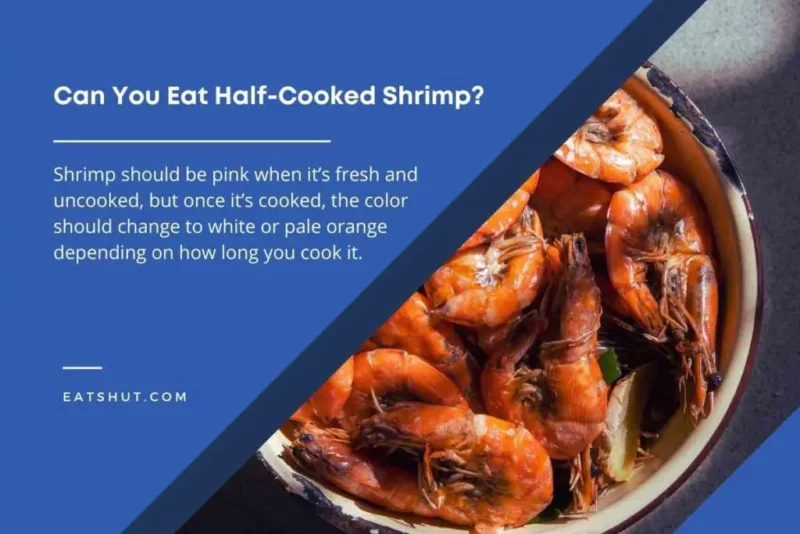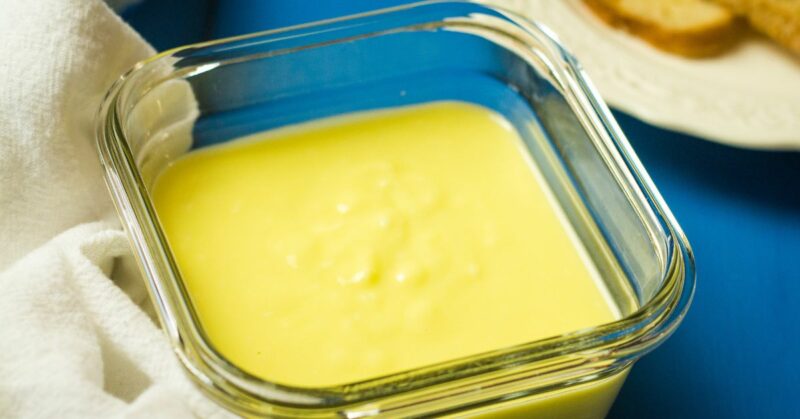Can You Get Sick from Cooked Shrimp?
Seafood is a popular delicacy across the globe, with shrimp being a common delicacy for many. With its sweet, succulent taste, it’s easy to see why people enjoy consuming this shellfish. Cooking shrimp is not only a delicious way to prepare them but it’s also beneficial in making the seafood safe for consumption. However, there are still risks that need to be considered, as even cooked shrimp may contain harmful bacteria and toxins that could cause illness.
Introduction
Cooked shrimp is generally safe to eat, but as with any food product, care should be taken to prevent foodborne illness. Proper sanitation and handling of shrimp before and after cooking are key steps in preventing an illness. Various factors may contribute to contamination and potential health risks when consuming cooked shrimp. This article will outline some of the potential hazards associated with cooked shrimp and provide tips on how to stay safe while enjoying cooked shrimp.
The Potential Risks of Eating Cooked Shrimp
Factors That Can Contribute To Illness
Cooked shrimp has the potential to make people ill from two main sources: bacterial contamination and toxins.
Bacterial contamination can occur if the shrimp is harvested from contaminated water sources or if it’s not handled properly before or after cooking. Vibrio bacteria and Salmonella are known to be found in seafood products like shrimp. Consumption of Vibrio can cause symptoms such as vomiting, diarrhea, abdominal pain, fever, loss of appetite and even death in rare cases. Salmonella causes similar symptoms but typically lasts longer than Vibrio infections.
Toxin contamination can occur when foods are mishandled or improperly stored, causing bacteria that produce toxins to grow on the food tenfold. Scombrotoxin and Ciguatera are two types of toxins commonly found in cooked shrimp.
Possible Types Of Bacterial Contamination
Vibrio
Vibrio is a form of bacteria found in saltwater. The most common species, Vibrio parahaemolyticus, can cause an infection called Vibriosis, which results in diarrhea and vomiting. It can also lead to infections in the bloodstream or wound infections if the bacterium gains entry into a wound.
Vibrio is found mostly in warm waters near coastal regions such as the Gulf of Mexico, where commercial shrimp farming is prevalent. Proper cooking procedures are important to kill off Vibrio and prevent illness from consuming cooked shrimp.
To avoid Vibrio infection when cooking shrimp:
- Cook shrimp thoroughly to at least 145°F. Shrimp should turn firm and opaque when cooked all the way through
- Avoid buying or consuming raw shrimp
- Maintain good hand hygiene when preparing shrimp during meal preparation
- Avoid purchasing seafood from unreliable sources or seafood that has been sitting out for long periods of time
Salmonella
Salmonella infections typically result in fever, diarrhea, and abdominal cramps. These symptoms usually start between twelve hours and three days after exposure. The illness generally lasts between four to seven days.
Contaminated shrimp with Salmonella may show no visible signs of contamination, but symptoms can still be present upon consumption. The bacteria can thrive in warm temperatures and moist environments both before cooking and after being cooked for seafood.
To avoid salmonella infection when cooking shrimp:
- Cook your shrimp fully – Usually, shrimp should reach an internal temperature of at least 145°F
- Thoroughly clean all hands, utensils, and cookware after preparing the shrimp
- Consider buying fresh or frozen shrimp from reliable providers with good hygiene practices
The Danger of Ingesting Toxins
Scombrotoxin
Scombrotoxin is a toxin that can result in scombroid poisoning upon ingestion. Scombroid poisoning is more commonly associated with the mackerel family, but it’s possible to find high levels of scombrotoxin in cooked shrimp if improperly handled.
Contamination can occur when bacteria transform histidine in fish into histamine. If consumed in high levels, histamine can cause a range of symptoms such as flushing, headache, sweating and gastrointestinal upset. These symptoms are generally mild and subside within several hours after consuming the contaminated shellfish.
To prevent illness due to scombrotoxin:
- Check labels carefully prior to purchasing
- Cool the cooked shrimp promptly to 41°F or lower after cooking
- If you notice signs of spoilage (like an off odor or texture), discard the product immediately
- Make sure to avoid extended exposure to temperatures between 60°-125°F.
Ciguatera
Ciguatoxin is produced by various microorganisms found on certain algae species in tropical waters. Upon consumption of infected fish species like grouper, barracuda or even cooked shrimp that has digested these toxins, people may experience Ciguatera symptoms that can range from dizziness and hot/cold reversal sensations to nausea and even paralysis. Symptoms tend to last for a few days and can recur years later.
To avoid ciguatera toxins:
- Do not consume large, predatory fish like barracuda and grouper
- Avoid purchasing cooked shrimp harvested from affected coastal regions
- If experiencing symptoms of ciguatera poisoning, seek medical attention immediately.
How Common Are Shrimp-Related Illnesses?
Foodborne illnesses associated with shrimp are generally rare, but they’re still prevalent enough to cause concern. A study conducted by the Centers for Disease Control and Prevention found an estimated 125,000 seafood-related foodborne illnesses every year in the United States alone. Of these illnesses, 75% were caused by toxic marine bacteria like vibrio and the remaining 25% was due to bacterial infections like Salmonella.
Factors That Can Influence Food Quality and Safety
Seafood Cultivation Practices
The method of cultivation may affect the safety of the shrimp. Farm-raised or wild-caught options will likely have different levels of contamination risks. Wild-caught shrimp aren’t immune to bacterial infections since they’re still exposed to similar environments where contaminated water can cause similar risks.
To choose safe shrimp:
- Select seafood items from trustworthy sources that administer good quality control measures
- Avoid seafood items or ingredients purchased from unreliable sources or untrusted vendors
- Farmed seafood that follows strict aquaculture practices (like organic certifications) are generally safer and more sustainable compared to those that use chemicals, hormones or other forms of non-organic feed components
Cooking Techniques
The way you cook your shrimp can affect its safety and taste. Careful preparation and cooking can help to reduce bacteria, parasites, and viruses on the raw shrimp before you prepare it.
When cooking shrimp:
- Cook the shrimp thoroughly. Cook them until their flesh is firm and opaque (at least 145°F)
- Avoid preparing cold or improperly cooked shrimp dishes. Cooking with a sous-vide machine or a temperature-controlled water bath (such as in an immersion circulator) can help maintain appropriate cooking temperatures throughout the cooking process
- Avoid overcooking resulting in dry and rubbery shrimp
Tips for Safe Consumption
Proper Storage Techniques
Cooked shrimp that’s leftover should be refrigerated immediately after consumption, with storage time lasting up to three days. If not eaten within this timeframe, it should be tossed. If left unrefrigerated or stored too long, cooked shrimp can cause food poisoning.
To keep your cooked shrimp safe:
- Ensure that cooked shrimp is properly chilled before storing at 41°F or lower in an air-tight container
- Don’t forget to label the container with the date and contents – This will help you keep track of proper storage times when leftovers go awry.
- Frozen cooked shrimp will last longer than refrigerated versions, but proper thawing processes are a must if using pre-cooked frozen shrimp
Labeling
Buying seafood products can sometimes be confusing when trying to identify product quality/origins. Proper labelling on packaged seafood products are helpful when making purchasing decisions that prioritize safety:
- Familiarize yourself with the different health and safety specifications for seafood, particularly those concerning Shrimp
- Ensure that the label properly identifies the product along with the origin and batch number
- If purchasing frozen products, try to obtain them from trusted sources that ship directly from origin
Tips for Eating Out and Travelling
When eating out or travelling abroad, take time to consider both restaurant hygiene standards and local seafood varieties. Even cooked shrimp obtained from these locales can pose risks of bacterial infection or toxin contamination, especially if proper food handling practices aren’t followed.
- Research restaurants near your location and prioritize those with good cleanliness practices
- Verify their protocols for handling any seafood before consuming it
- Avoid consuming anything cooked in large batches without being thoroughly heated up within an appropriate timeframe.
- Avoid purchasing seafood harvested from potentially contaminated waters when travelling abroad
Conclusion
Cooked shrimp is generally safe to consume and offers a range of health benefits for those who enjoy it. However, certain risks must be considered before consumption, mainly bacterial contamination or toxins that may cause illness. Proper cooking techniques, safe storage practices and paying close attention to seafood sourcing options can reduce these risks significantly. By staying informed about these crucial safety considerations when preparing cooked shrimp dishes, you can enjoy fresh seafood with confidence.
References:
- The CDC: Food Safety | Vibrio infections
- CDC – Food Brands Report: Surveillance of Foodborne Disease Outbreaks United States CDC; 2016
- The Centers for Disease Control and Prevention (CDC): Salmonella and Food
- Seafood Health Facts: Shrimp Farming 101
- The US National Library of Medicine’s MedlinePlus: Ciguatera
Frequently Asked Questions
Can You Get Sick From Cooked Shrimp?
1. Is it possible to get sick from eating cooked shrimp?
Absolutely, yes! Despite the fact that cooked shrimp are safe to eat, sometimes they can carry harmful bacteria that can lead to food poisoning.
2. What are the common symptoms of food poisoning from shrimp?
The symptoms can vary, but common ones include nausea, vomiting, diarrhea, stomach cramps, and fever.
3. How can I prevent getting sick from eating cooked shrimp?
Before consuming shrimp, make sure they’re thoroughly cooked. Avoid consuming raw or undercooked shrimp. It’s also important to properly store and handle seafood to prevent cross-contamination.
4. Can properly cooked frozen shrimp cause food poisoning?
It’s unlikely that properly stored and thawed frozen cooked shrimp could cause food poisoning. However, it’s essential to ensure that the necessary precautions are taken when handling and cooking seafood to avoid contamination.







